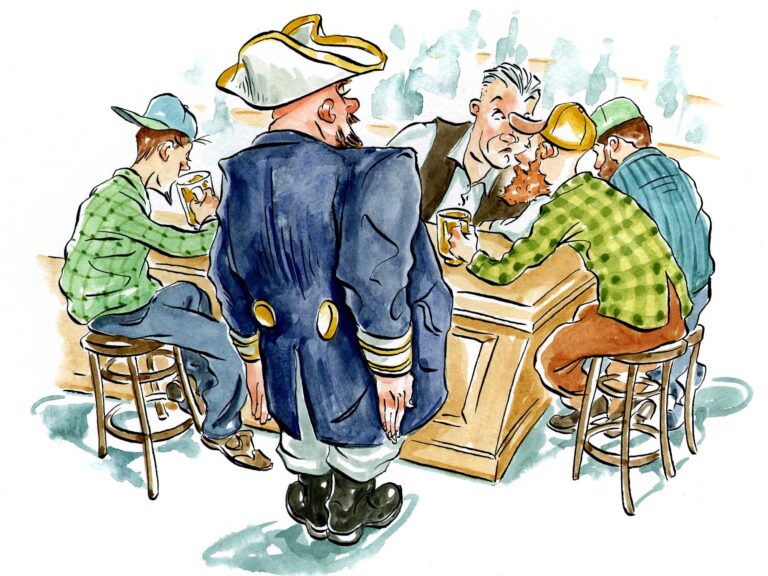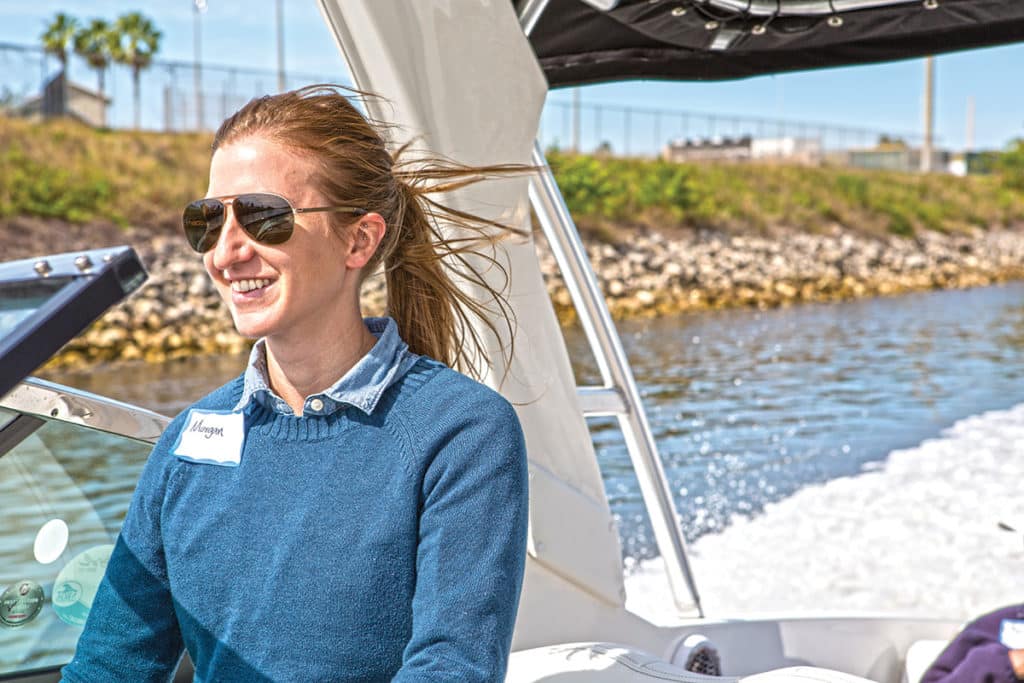
I’ve never driven a boat before today when I put my hands on the wheel of a brand-new 30-foot Sea Ray 300 SLX.
The situation makes me nervous.
Very nervous.
I’ve been in boats — lots of boats. I’ve fished aboard bass boats, jon boats, flats boats and other boats that propelled me through the water while I stood on them so I could go fishing. (Hey, I wasn’t paying attention to what kind of boat I was in — just to the places that boat could get me.) I’ve even laid down at least three Benjamins for a kayak of which the single redeeming quality is that it keeps me upright while in the water. But I’ve never actually operated a boat.
So that’s why I’m in a class called Women on Water, hosted by boat retailer MarineMax.
The class is designed to help women feel more comfortable handling boats, teaching them these skills in a relaxed, judgment-free atmosphere — away, even, from their husbands.
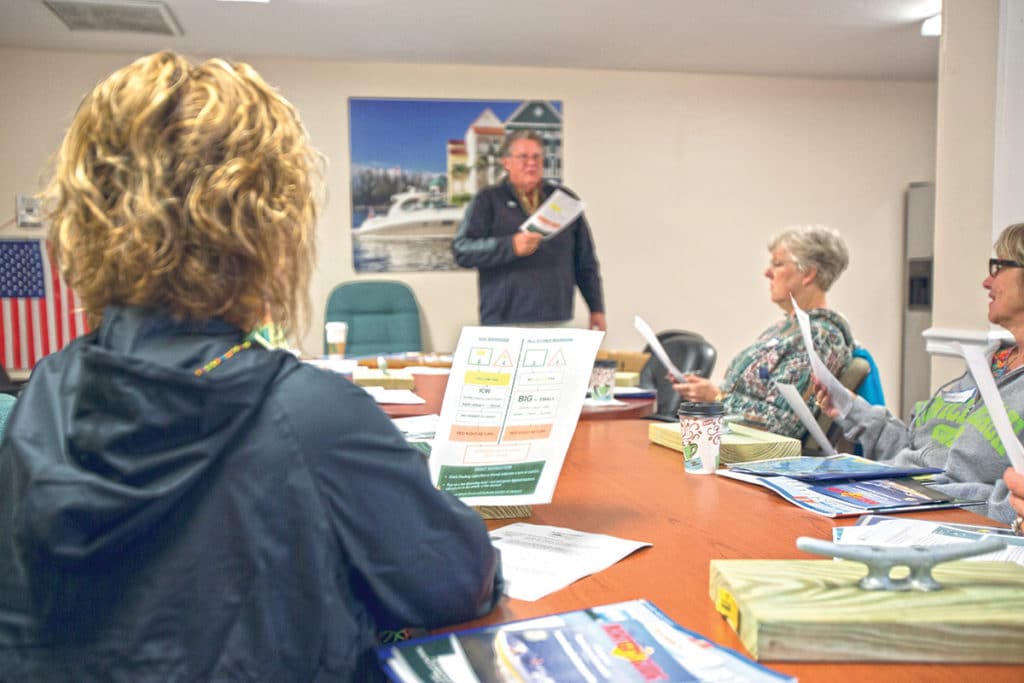
“Once you get a woman in that stress-free zone, she tends to pick up boating basics pretty quickly,” says Capt. Rusty Pearsall, a corporate captain for MarineMax. Pearsall is the leader of the class I’m attending on a windy day in Venice, Florida.
“For the most part, women are more careful and don’t blame everyone around them for their mistakes,” Pearsall tells us, smiling. “I’m not saying it’s a fact of life — just saying.”
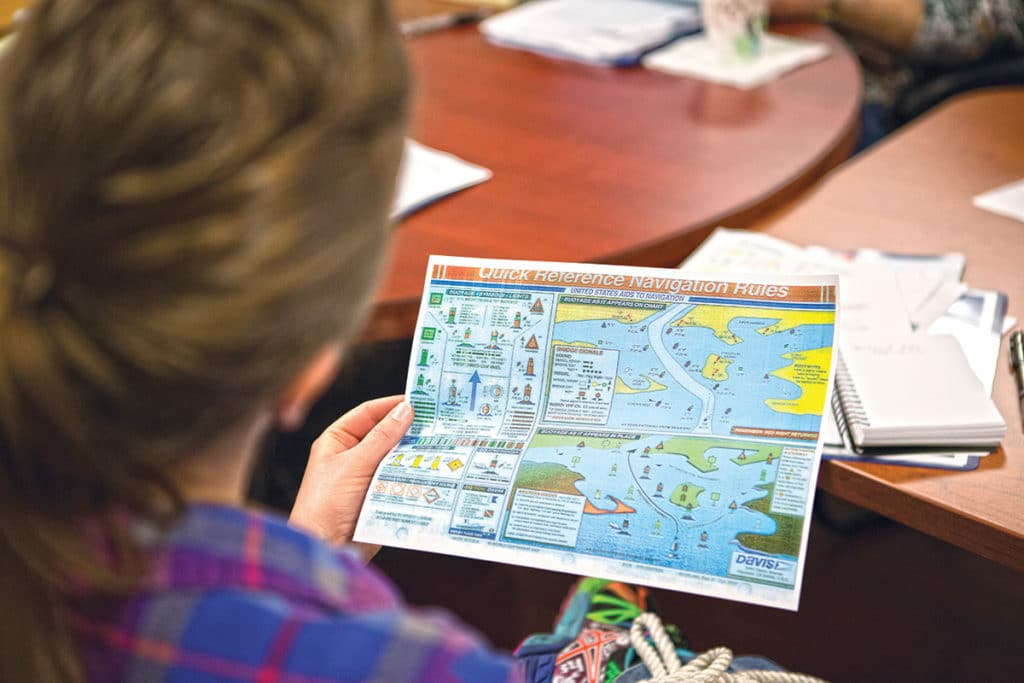
First, the Paperwork
The class is divided into two portions: an hour in the classroom, and then a much longer portion spent on the water, practicing the skills Pearsall taught us in class. But on this Saturday, the wind and waves are just too high to teach a bunch of inexperienced people how to drive a boat.
So this first day, we stick to the classroom. We learn a general overview of the Intracoastal Waterway. We learn how to read channel markers and basic knot tying, both the bowline knot and the clove hitch. Pearsall leads us through this fairly informally, as the most important part would take place on the water.
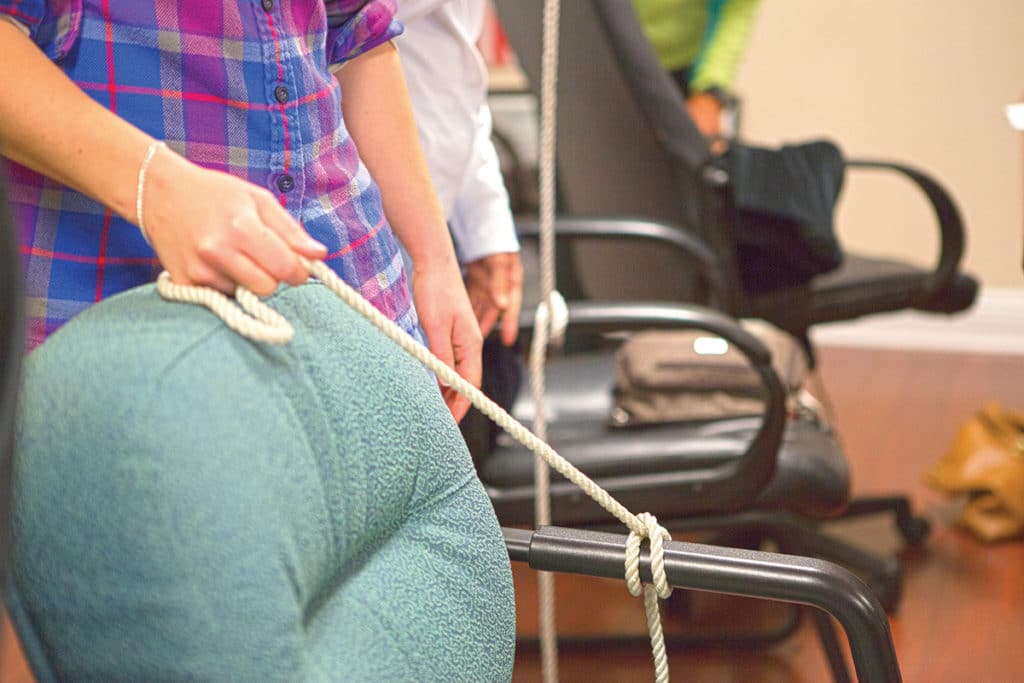
Fast-forward seven days to another Saturday in Venice, and Pearsall has kindly reconvened the class. This time it’s a perfect 65-degree day with calm seas. Today we don’t even look at the classroom — we head straight for the docks.
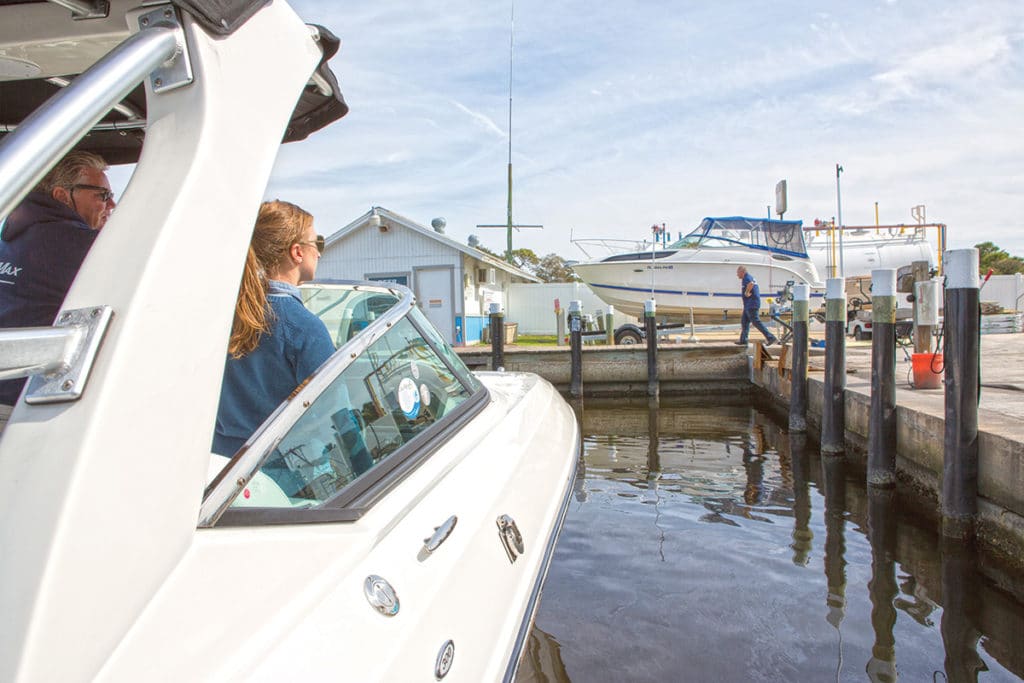
Docking 101
Because most of my boating experience is fishing from an aluminum jon boat, which would probably damage a dock considerably more than the dock would damage it if the two met in a less-than-gentle manner, the Sea Ray’s unblemished fiberglass unsettles me a little bit. It’s not that I thought MarineMax would put us boat-driving newbies in an old clunker for the class — it’s just that I would have felt better if it did.
But Pearsall isn’t worried.
“Aah, you’re not going to hurt anything,” he repeats to me and the rest of the class any time we act nervous about our lack of experience. (Later he does, however, let it slip that MarineMax employs a full-time fiberglass repair guy for any accidents that occur, a fact that should make me feel better than it does.) Pearsall does his best, though, to avoid any situation that might require those services.
One by one, he guides us through how to take the boat from neutral and bump it into gear — no use of the throttle yet. Then, without using the throttle, each person steers the boat from MarineMax’s marina to the adjacent canal. This method of bumping a boat in and out of gear is more than enough to approach a slip and dock your boat there, Pearsall says.
“You don’t drive a boat to dock, you nudge it there,” he says. “You can’t be in a hurry. Patience is a great quality to have.”
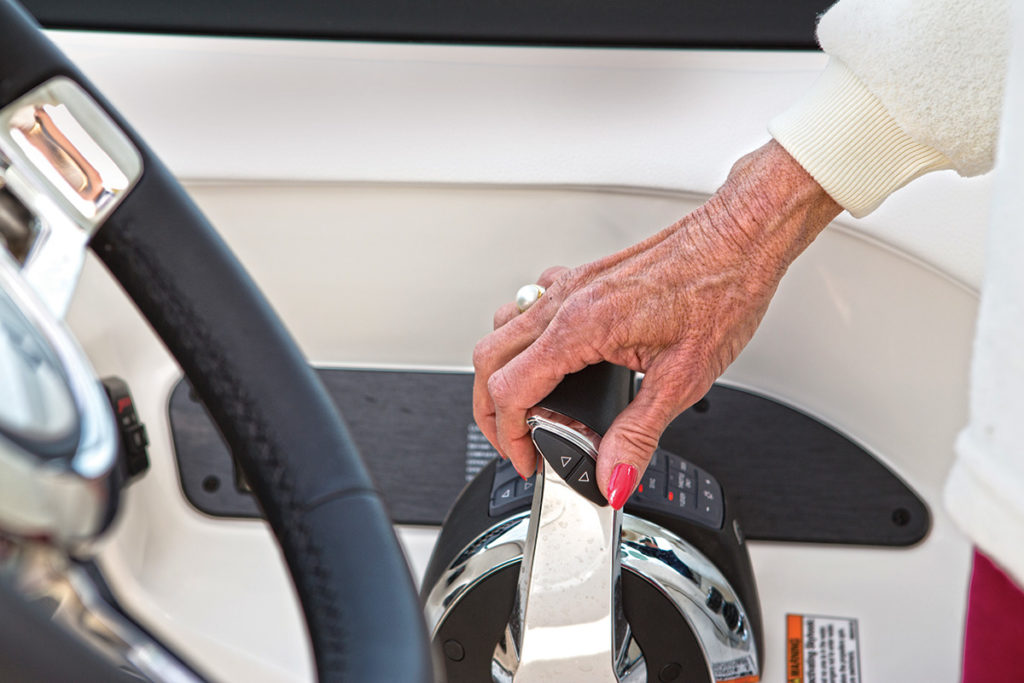
The first thing most drivers do, he says, is they throw the boat into gear and push the throttle forward. But it’s hard to slow down or correct turns on water, and giving the boat too much gas is a good way to ram it into the dock — something you don’t want to do when you’re pulling up for a burger and a beer during a good day on the water.
“Driving a boat is like driving a car on a huge, floating piece of ice,” Pearsall says.
When it’s my turn to drive, Pearsall’s comparison feels accurate. Driving the boat from the canal and making a right turn into MarineMax’s marina, I have to anticipate the turn far in advance. When I make the right turn, the degree to which I spin the wheel right feels exaggerated. The boat turns right. In a car, the turn would look like a wide fishtail in slow motion.
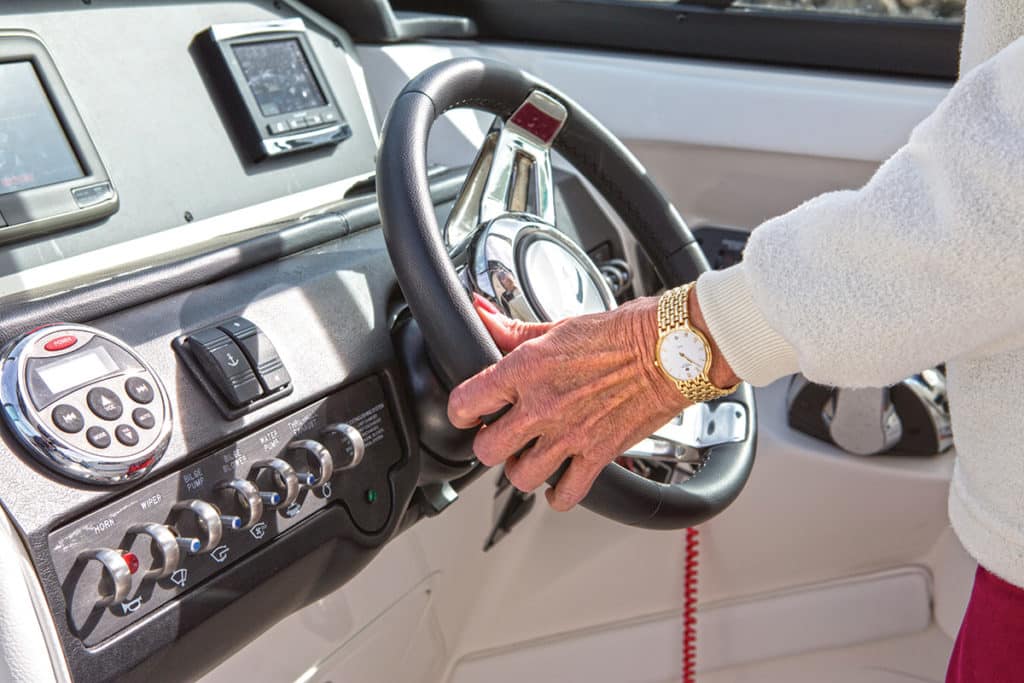
At this point, when I’m ready to make my approach, Pearsall’s coaching really kicks into gear. He tells me to aim the boat’s bow toward the center of where I want the boat to dock and to come to the dock at about a 45-degree angle — all the time bumping the boat in and out of gear rather than using the throttle. When I’m close enough — about half a boat length away, which feels almost too close to me — Pearsall tells me to spin the wheel in the opposite direction of the dock. Any time I lose sufficient momentum, Pearsall tells me to bump it back into gear.
Now, here’s the counterintuitive part: Once I’m close enough to the dock, Pearsall tells me to swing the wheel back toward the dock and bump the engine into reverse. Like parallel parking a car, bumping the engine into reverse pulls the nose of the boat alongside the curb — or in this case, the dock.
My first try, I end a little too far from the dock. But no bother; Pearsall says the boat will drift close enough. I’m relieved. Better to be too far from the dock on my first try than to get far too close.
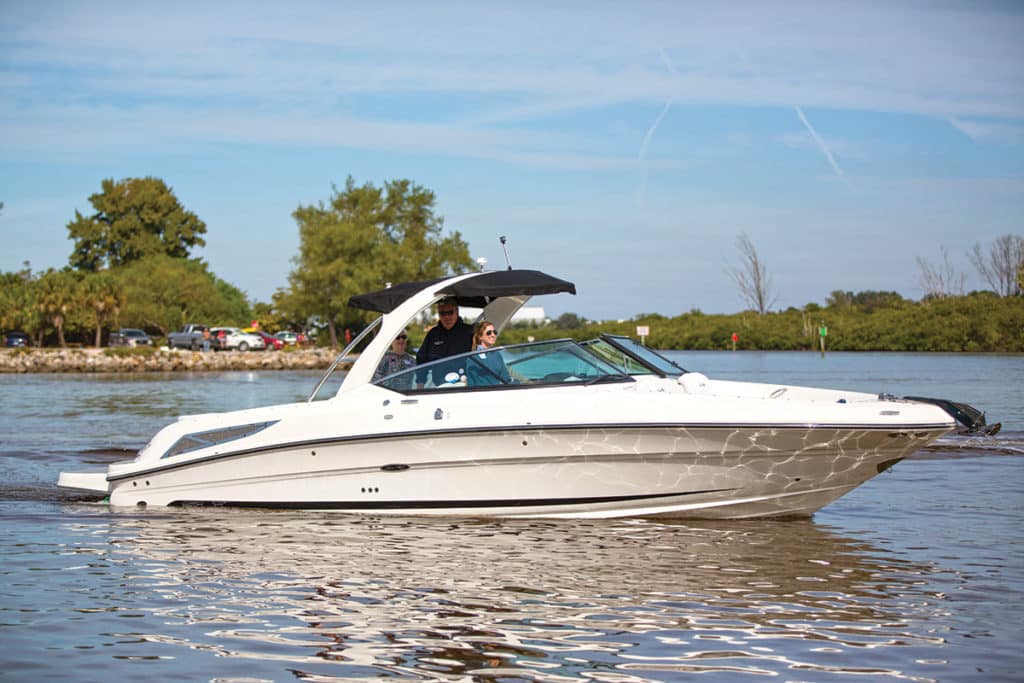
Playing in Traffic
After each woman has cycled through docking the boat at least once, we head out for a little more open water. MarineMax’s marina connects to a canal, which then runs through the city of Venice, out the Venice Inlet and into the Gulf of Mexico.
We take turns driving down the canal, bumping up the throttle whenever we leave a no-wake zone. When it’s my turn to check out the boat’s speed, I have a tough time keeping the boat going in a straight line until I get the feel of how not to overcorrect with the wheel.
Then, at a few different points along the canal, Pearsall pop-quizzes us on how to dock the boat. After one woman successfully docks the boat in front of a crowd at a popular waterfront eatery, another guy docking his own boat yells out, “You’re hired!”
Each time a woman takes her turn, we all clap and cheer her on. Lou Steele, a second-grade schoolteacher from Port Charlotte, Florida, tells me I’m a natural, but I suspect that’s only because my fine motor skills might be a little better than most of her students.
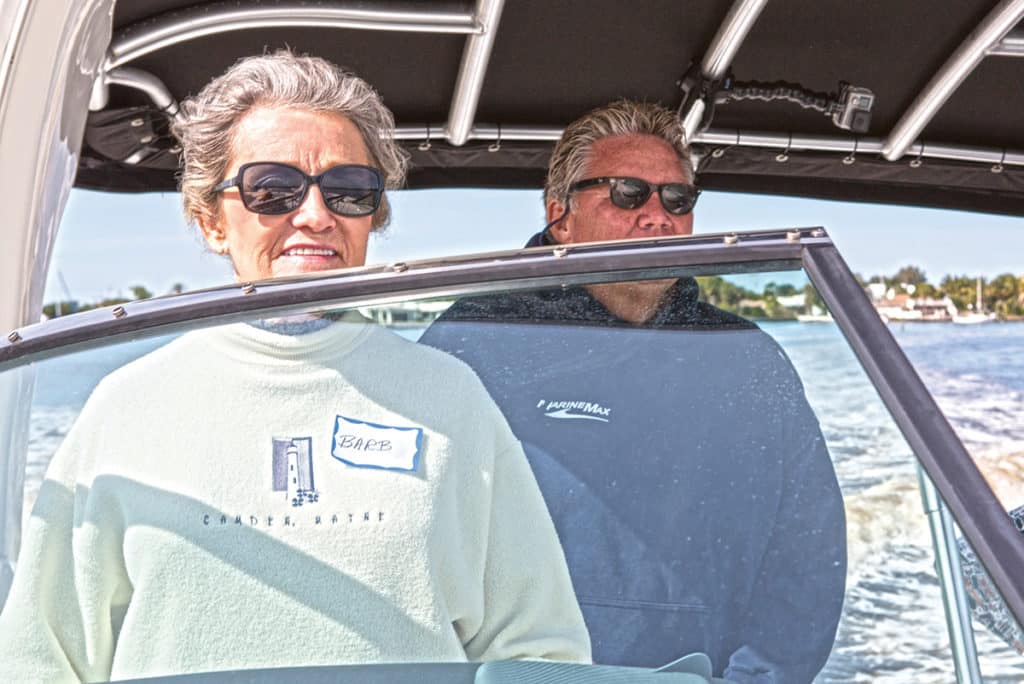
The women gathered in the class are here for several different reasons. One woman owns a boat with her husband, and they hope to make an Intracoastal Waterway trek from Tarpon Springs, Florida, to Norfolk, Virginia. Another woman, in her retirement years with her hair carefully done and makeup immaculate, was there at the behest of her fiancé. He lives in Maine, she in Anchorage, Alaska, and they meet in the winter in Florida.
Steele, the Port Charlotte teacher, recently purchased a pontoon boat with her husband to use for their new pastime, scuba diving. The first time they used the pontoon for a scuba trip, the pair forgot one crucial detail before they descended on their dive: to mark exactly where their boat was. When Steele resurfaced, she and her husband were so far from the pontoon, they could barely see it.
“I was the first back to the boat, and I could barely get back on, my legs were so tired,” Steele says. “I had no idea what I was doing. I didn’t know how to turn on the boat, and I didn’t know how to drive it.”
Steele and her husband escaped their scuba situation, but the experience rattled them both. Steele decided she needed to learn how to handle a boat — both because of that day, and because her husband has a heart condition.
“I don’t want to drive a boat. I don’t want to learn to drive a boat. But I thought I had better figure it out,” Steele says.
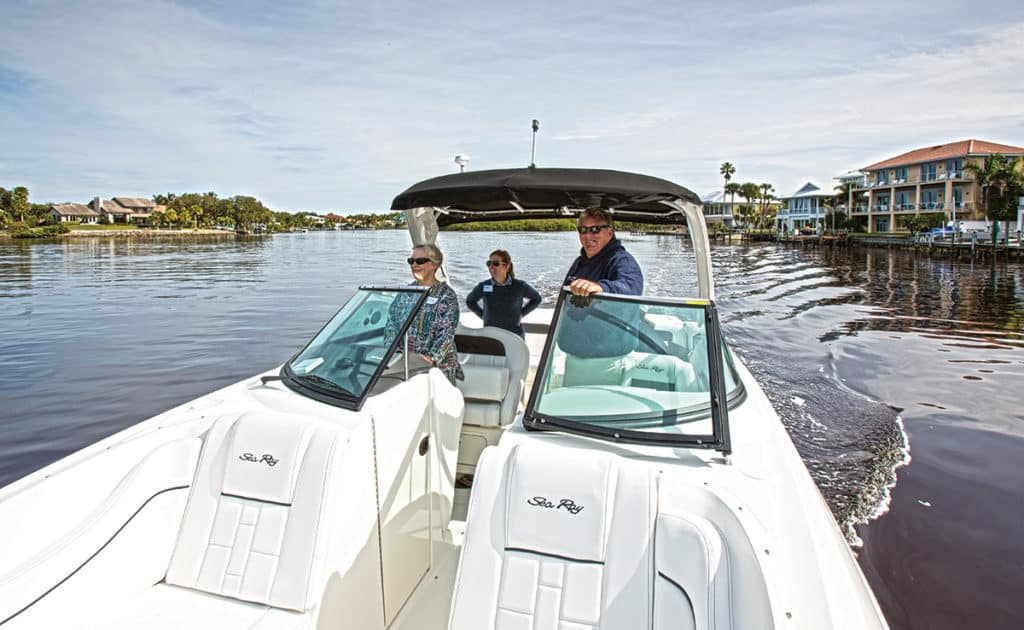
It’s a bit of a mystery when the Women on Water series started, but it’s been going on for at least 20 years, Pearsall says.
A 10-year MarineMax employee, Pearsall began teaching the class as part of his duties as a corporate captain for the company. He delivers boats for MarineMax and teaches new boat owners how to operate their boats, providing support as needed.
He sees the need to help women learn to drive boats as both a tool for women and a business decision for the company.
“I think women make most of the decisions in buying a boat,” Pearsall says. “And if you can convince them that they can fit into the lifestyle, to be an active part of it, I think it’s a good sales tool for the company.”
Pearsall also knows that giving women basic boating skills may help them enjoy the pastime even more.
“I think it empowers women to take control of boats rather than be passive observers or unwilling mates,” he says.
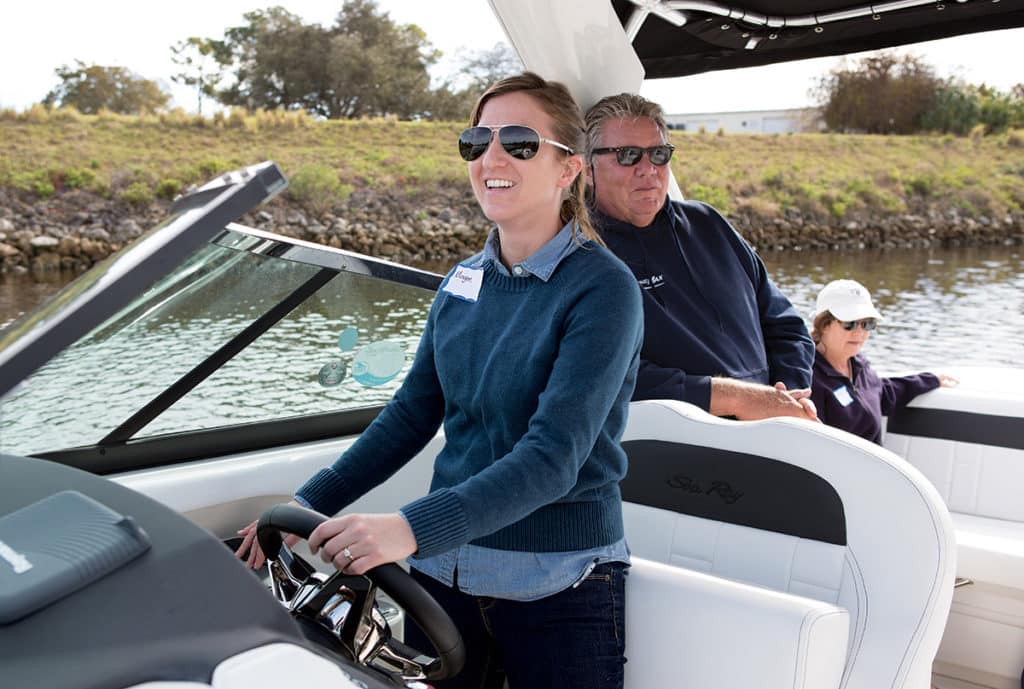
And really, that is the most valuable reason for the class. Women may often hold the purse strings in a marriage, but women also want to learn. Women, like the one with the Maine sweetheart, want to feel the difference between paddling in a float tube while fly-fishing in Anchorage and operating a $245,000 boat. They might be first mates to their husbands on a 1,000-mile trek through the eastern United States, or, like Lou Steele, they may need to be ready in case their husbands have medical emergencies.
Me? I desire, one day, to buy a flats boat. I think going that route just might get me from redfish point A to redfish point B a lot faster than in my kayak.





